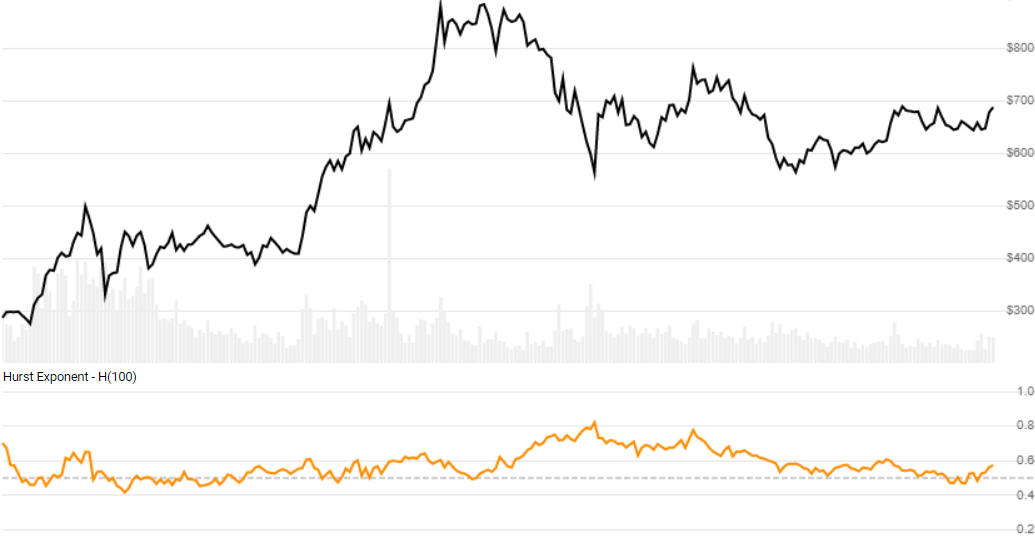Hurst Exponent
The Hurst Exponent (H) is part of a Rescaled Range Analysis, a random-walk path analysis that measures trending and mean-reverting tendencies of incremental return values. When H is greater than 0.5 it depicts trending. When H is less than 0.5 it is is more likely to revert to the mean. When H is around 0.5 it represents a random walk. [Discuss] 💬

// C# usage syntax
IEnumerable<HurstResult> results =
quotes.GetHurst(lookbackPeriods);
Parameters
lookbackPeriods int - Number of periods (N) in the Hurst Analysis. Must be greater than 20. Default is 100.
Historical quotes requirements
You must have at least N+1 periods of quotes to cover the warmup periods.
quotes is a collection of generic TQuote historical price quotes. It should have a consistent frequency (day, hour, minute, etc). See the Guide for more information.
Response
IEnumerable<HurstResult>
- This method returns a time series of all available indicator values for the
quotesprovided. - It always returns the same number of elements as there are in the historical quotes.
- It does not return a single incremental indicator value.
- The first
Nperiods will havenullvalues since there’s not enough data to calculate.
HurstResult
Date DateTime - Date from evaluated TQuote
HurstExponent double - Hurst Exponent (H)
Utilities
See Utilities and helpers for more information.
Chaining
This indicator may be generated from any chain-enabled indicator or method.
// example
var results = quotes
.Use(CandlePart.HLC3)
.GetHurst(..);
Results can be further processed on HurstExponent with additional chain-enabled indicators.
// example
var results = quotes
.GetHurst(..)
.GetSlope(..);